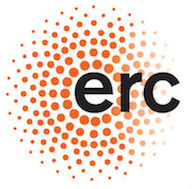All data are now available at https://biomedia.github.io/dHCP-release-notes/
Download from this site is no longer available.
Second Data Release
We would like to announce the second release of data as part of the Developing Human Connectome Project (dHCP) – an ERC-funded collaboration between King’s College London, Imperial College London and University of Oxford.
This is the project’s second open access data release which consists of images of 558 neonatal subjects. The imaging data includes structural imaging, structural connectivity data (diffusion MRI) and functional connectivity data (resting-state fMRI). This data release comes with minimal accompanying metadata: sex, age at birth, age at scan, birthweight, head circumference and radiology score. More specific information about the available data can be found in the accompanying Release Notes . To access the data you will be required to agree to a simple data sharing agreement and will then be provided with access routes to two different modes of data download.
We invite colleagues in the field to explore and feedback on the value and characteristics of the image dataset. The image data have been processed using analysis pipelines that are subject to further development. If you use this data or the pipelines please cite the appropriate publications as detailed in the How to cite notes.
The project to date has successfully completed over 800 neonatal scans and over 250 fetal scans, and further data is still being collected. Further data releases are planned – these will be announced on the dHCP website when they are ready.
Acknowledgements
The research leading to these data has received funding from the European Research Council under the European Union Seventh Framework Programme (FP/20072013)/ERC Grant Agreement no. 319456. The work was also supported by the NIHR Biomedical Research Centres at Guys and St Thomas’ NHS Foundation Trust. We are grateful to the families who generously supported this trial. We are also thankful to the WU-Minn-Oxford Human Connectome Project consortium (1U54MH091657-01) for access to their computing resources.
Registration
In order to be able to browse/download data, you will need to register by following this link. On the dHCP data login page, select ‘Register’ and fill out the mandatory fields (***Email must be institutional email, personal email is NOT acceptable; ***LAB must include Lab/Department/University or Institute full name/Country***) . You will receive a verification email. After you verify your email address, you will be able to login to sign an agreement and access the public face of the dHCP database (db). This includes browsing (although not downloading) available Projects (data sets).
If you experience any technical issues, please submit your query here.
Data review and download
In order to unlock download options for available Projects (data sets), you will have to sign user terms. Open any Project and hit ‘Sign user terms’. Once confirmed you will be able to view a list of subjects, preview the available data as acquired (without any pre-processing) and will be provided two download options.
-
Academic Torrent download (recommended)
Since data sets are fairly large (expect ~500GB) this is a fail-safe way to get hold of desired releases. A separate document provides more detailed instructions. Be sure to have a Torrent client such as BitTorrent installed on your computer. Clicking on the ‘Download Data Set (Torrent)’ button will provide you with a .torrent file a few kB in size. Opening this .torrent file in your Torrent client will give you the option to select among subsets of the selected release. Once confirmed, your torrent client will automatically start the download from multiple peers. You can pause/stop the download at any time. By downloading parts of the bundle you automatically become a peer for the selected .torrent file, which increases bandwidth for other peers. You are encouraged to at least upload the same amount of data that you downloaded (a download/upload ratio of 1.0 in the Torrent client), however this is not a must. Caveat: Your system administrator / institution might block (or be unhappy with) peer-to-peer traffic for various reasons.
Once you start downloading the dataset, you will notice that your torrent client mentions a sharing / seeding ratio. It means that as soon as you start downloading the dataset, you become part of our community of sharers and contribute to making the dataset available to other researchers all around the world!
There is no reason to be scared! It’s perfectly legal as long as you are allowed to have a copy of the dataset (that is the information you need to forward to your lab’s IT team if they are blocking your ports). You are actually providing a tremendous contribution to dHCP by spreading the data, so thank you again for that. With your help, we can make sure this data remains available and can be downloaded relatively fast in the future.
Over time, the dataset will grow and your contribution will be more and more important so that each and everyone of you can still obtain the data in the smoothest possible way.
-
Downloading non-imaging data
The data release contains some non-imaging data, which can be directly downloaded as an Excel spreadsheet by selecting ‘Spreadsheet’ from the ‘Options’ drop down menu from the table view page.
The data release supplementary documentation can be directly downloaded by clicking on the link ‘documentation: Data Release’ on the main table view page.

